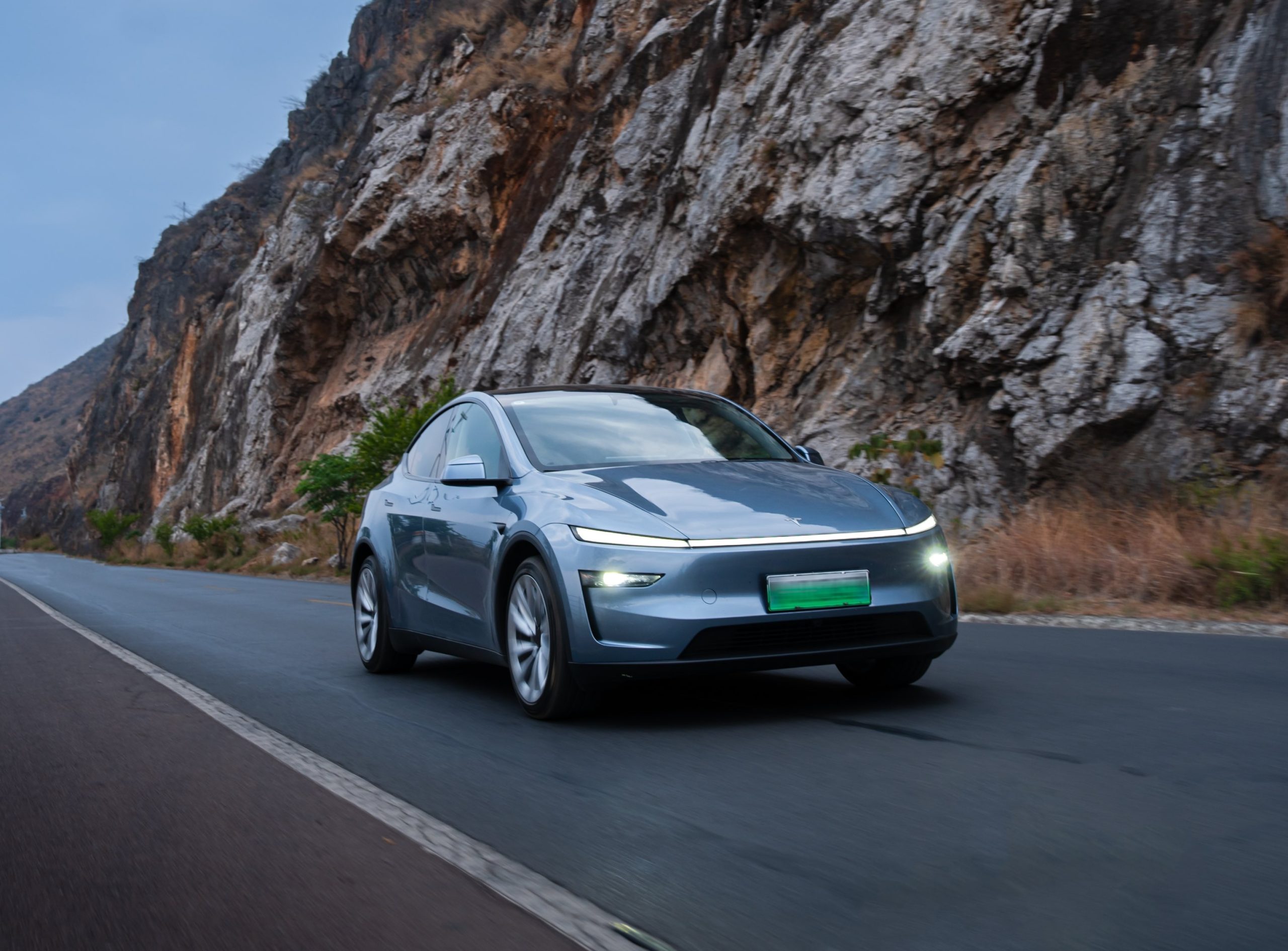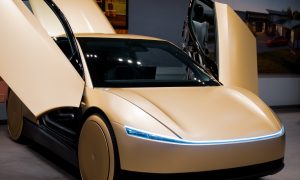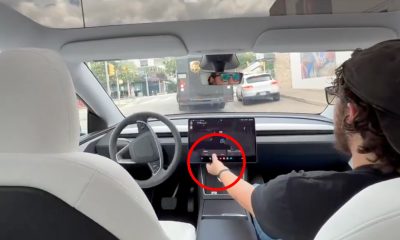Tesla started a price war last month, and as the company works to keep its costs as optimized as possible, some of its suppliers are preparing to experience some pressure. The concerns were related by industry officials who work with Tesla and its suppliers.
Comments from executives during the fourth quarter and full-year 2022 earnings call suggest that Tesla is currently focused on its costs. Tesla Chief Financial Officer Zach Kirkhorn, for one, noted that the company was “attacking every area of cost,” and CEO Elon Musk noted that a recession, if one does happen, could lead to “meaningful decreases in almost all of our input costs.”
Dan Sharkey, a co-founder of Brooks Wilkins Sharkey & Turco and a lawyer who represents automotive suppliers, noted that aggressive price cuts are never really good news for suppliers. “It is never good for suppliers when (automakers) cut vehicle prices because that pressure rolls downhill. I never like it, because I know eventually they’re going to try to get it out of one of us,” Sharkey said.
“My message is, there’s not going to be any room there. Many suppliers are financially struggling,” he added.
While major Tesla suppliers such as Panasonic, LG Energy Solution, CATL, and IDRA, are typically cautious about statements concerning their relationship with the electric vehicle maker, a Tesla supplier who opted to remain anonymous informed the publication that the company focused more on delivery over pricing during the pandemic.
This meant that Tesla was willing to pay a premium to acquire parts at a faster pace. Following the Q4 and FY 2022 earnings call, the Tesla supplier is reportedly worried that this trend will change. Tesla, for its part, has not issued a statement about the matter as of writing.
Carmakers such as Tesla saw notable margins during the pandemic. But while this was the case, some suppliers reportedly were not able to fully pass along their higher costs, resulting in lower margins. Bain, a consultancy firm, estimated that in Q3 2022, the profit margins of automakers were almost 3% higher than suppliers. With this in mind, suppliers would likely experience even more pressure as carmakers like Tesla lower their prices.
Some Tesla suppliers are already experiencing a lot of headwinds. Gissing North America, a Michigan-based company that produces acoustic systems and headliners for car ceilings, counted Tesla as its largest customer. Yet last year, the company filed for bankruptcy due to high commodity prices and labor costs. Steven Wybo, chief restructuring officer, noted that he does not really see things getting easier anytime soon.
“There’s certain things that I think will ease, but there’s this labor component that’s built in to the price of everything, and I don’t see that easing any time soon and potentially never,” Wybo said.
Industry officials, for their part, have noted that Tesla might aim to reassure its suppliers by highlighting that the potential losses from lower prices will be more than made up for in higher volumes of orders. This would definitely be beneficial for Tesla and its suppliers, especially considering the electric vehicle maker’s efforts to ramp to 20 million vehicles per year by the end of the decade.
Don’t hesitate to contact us with news tips. Just send a message to [email protected] to give us a heads up.
News
xAI Colossus pollution concerns in Memphis continue
NAACP & SELC push back against xAI Colossus supercomputer. City tests say air is safe — but activists aren’t convinced.

Politicians in Memphis continue to debate about the pollution concerns arising from the xAI Colossus supercomputer.
The NAACP and the Southern Environmental Law Center (SELC) have already expressed interest in filing a lawsuit against xAI over concerns related to air pollution stemming from its gas-powered turbines. Environmental groups have now raised concerns about water pollutants.
On Tuesday, Memphis released third-party air quality test results from June 13 and 16. The tests were conducted in downtown Memphis, Whitehaven, and Boxtown, two miles from xAI’s site. The city claimed levels of 10 pollutants tested were safe.
However, SELC–which is representing the NAACP in a potential lawsuit against xAI–criticized the omission of a key pollutant called ozone from the air quality tests. SELC also noted that monitors were placed against buildings, contrary to EPA guidance, stating air sensors should be “at least six feet above ground level, rooftop, or other objects and away from obstructions, vegetation, or emissions sources that would interfere with the measurement.”
Local opposition intensified, with State Representative Justin J. Pearson asserting: “I stand firm that nothing matters if you cannot breathe clean air, drink clean water, and plant in clean soil.”
On Wednesday, concerns shifted to the Memphis aquifer, as the Tennessee Department of Environment and Conservation held a virtual meeting on xAI’s wastewater facility.
Activist Pamela Moses criticized xAI. “They are not coming here to uplift or invest in our community. They are here to exploit it. This a distressed and a historically neglected area, and instead of bringing opportunity, Colossal is bringing pollution…secrecy and broken promises,” she said.
xAI’s $80 million Grey Water facility aims to mitigate water concerns. The Colossus Water Recycle Facility, a collaboration between the Tennessee Valley Authority and Nucor Steel, aims to alleviate the strain on the aquifer.
“This project is a game changer in terms of it saving about 4.7 billion gallons of water projected, and about 4.7 billion gallons will remain in the aquifer every year,” said Bobby White of the Greater Memphis Chamber.
As xAI’s Memphis supercomputer continues to be the center of debates, the tension between economic benefits and environmental justice remains unresolved. With ongoing scrutiny and potential legal action, xAI’s efforts to address pollution and water concerns will shape its role in Memphis’ future.
News
Tesla Robotaxi’s biggest challenge seems to be this one thing
That big bright thing in the sky might be Tesla’s biggest challenge in terms of Robotaxi.

Tesla Robotaxi launched just a few days ago to a limited number of riders in Austin, Texas, but its biggest challenge seems to be how the automaker will figure out one thing: the Sun.
Among the company’s unique strategies, its emphasis on using cameras for self-driving is perhaps the most interesting. No other company has adopted the same strategy, as others have relied on cameras with either sensors or LiDAR rigs to accomplish their self-driving deployments.
Tesla, on the other hand, has called LiDAR unnecessary. CEO Elon Musk once called it “a fool’s errand,” stating it was not needed to build an effective self-driving fleet of vehicles.
Musk compared cameras to eyes. Humans don’t need sensors or LiDAR to operate vehicles on the road, so why should cars? This brought up some questions, especially regarding sun glare. Musk said that Tesla would use direct photon counting to see directly into brigt sunlight or even in the darkest conditions at night.
His quote during a recent earnings call was:
“Actually, it does not blind the camera. We use an approach which is direct photon count. When you see a processed image, so the image that goes from the sort of photon counter — the silicon photon counter — that then goes through a digital signal processor or image signal processor, that’s normally what happens. And then the image that you see looks all washed out, because if you point the camera at the sun, the post-processing of the photon counting washes things out.”
So far, this strategy has yielded mixed results. We have seen examples of both:
The Good
We’ve had a handful of people state that they have had no issue using the Robotaxi when it is driving into direct sunlight.
There are plenty of examples:
Robotaxi seems to have no trouble driving into the sun. More to come pic.twitter.com/rZdd3Sya8k
— Dirty Tesla (@DirtyTesLa) June 25, 2025
Tons of direct sun glare during many of my Tesla Robotaxi rides today in Austin. The vehicles handled it with no problem. pic.twitter.com/3kyiQF4RMs
— Sawyer Merritt (@SawyerMerritt) June 24, 2025
Absolutely ZERO issues heading into direct sunlight in our Robotaxi, been going for almost an hour now during golden hour/sunset. As smooth as it always is. pic.twitter.com/iSCp6qdNC0
— Zack (@BLKMDL3) June 25, 2025
The Bad
🚗 Day 1 of Robotaxi testing with 20 initial riders! Caught a rare phantom braking moment on camera during our Waymo vs. Tesla Robotaxi race. 🤖 It’s a one-off glitch in Full Self-Driving mode—most rides were smooth! Drop your thoughts! 👀 pic.twitter.com/liJGSIIHKw
— Kim Java (@ItsKimJava) June 24, 2025
The Verdict
This is obviously a weird case, and it seems that this could be one of the challenges Tesla will face with the deployment of Robotaxi.
While it will get figured out, this is something that could ultimately push back Tesla’s goal of having no safety monitor in the vehicles. However, the instance will be learned and used to improve in the future through its Neural Nets.
The first intervention was captured yesterday, requiring the Tesla safety monitor to stop the vehicle manually on the car’s touchscreen.
News
Tesla owners take stand as Stockholm insists on blocking FSD tests
Despite the Tesla owners’ efforts, city officials appear unwilling to budge.

Tesla owners in Sweden are taking it upon themselves to lobby for the approval of FSD-style tests in the City of Stockholm. The owners’ efforts come amidst city officials’ continued refusal to allow Tesla to test its autonomous driving system in the capital.
In open letters and social media posts, Tesla owners have urged Stockholm to reconsider its stance, pointing to broader support for FSD trials across Europe. But despite their efforts, city officials appear unwilling to budge, reinforcing the capital’s hardline stance on the Elon Musk-led EV maker.
Public support shows brand loyalty
A group of Swedish Tesla owners recently sent an open letter to Stockholm leaders. Among them is Alexander Kristensen, who has written a letter to officials urging them to allow Tesla to test FSD in the region.
“Members of the Traffic Committee are politically appointed by the Stockholm City Council, whose mandate is determined by the popular vote. Your stance—continuing to block a conditional pilot of FSD— is thus a political decision and fully subject to the electorate’s judgment in the next municipal election.
“When the City prevents tests that could validate and refine the technology locally, it is perceived as hampering life-saving innovation,” the Tesla owners wrote.
The Swedish Transport Administration issued a response, acknowledging the Tesla owners’ feedback. The Transport Administration noted that it could proceed to grant a permit for Tesla to test FSD, but the company would still have to secure approval from local governments where the FSD-style tests will be conducted.
Stockholm remains firm
Despite this, Stockholm doubled down shortly after, stating that Tesla’s FSD software remains prohibited on city roads.
“Thank you for your comments and for taking an interest in traffic issues concerning the City of Stockholm. As previously stated, the City’s assessment of the current application remains unchanged and our position is set out in the opinion,” the City of Stockhom wrote.
In light of the city’s response, some Tesla owners have vowed to campaign against current officials in the next election.
The push for FSD testing comes as Tesla faces ongoing challenges in Sweden, including a labor dispute with unions over collective bargaining agreements. Since late 2023, the conflict has resulted in strikes, blockades, and legal battles, none of which appear close to resolution. Despite regulatory and labor headwinds, Tesla continues to expand in the region, including the recent installation of Superchargers in union-backed areas.
-

 Elon Musk2 weeks ago
Elon Musk2 weeks agoTesla sues former Optimus engineer for stealing trade secrets
-

 News2 weeks ago
News2 weeks agoSpaceX produces its 10 millionth Starlink kit
-

 News2 weeks ago
News2 weeks agoTesla Robotaxi just got a big benefit from the U.S. government
-

 News2 weeks ago
News2 weeks agoTesla launches new Model S and Model X, and the changes are slim
-

 News1 week ago
News1 week agoTesla confirms massive hardware change for autonomy improvement
-

 News2 weeks ago
News2 weeks agoTesla retires yoke steering wheel in base Model S and X
-

 Elon Musk2 weeks ago
Elon Musk2 weeks agoTesla Full Self-Driving’s European launch frustrations revealed by Elon Musk
-

 News1 week ago
News1 week agoTesla features used to flunk 16-year-old’s driver license test





















